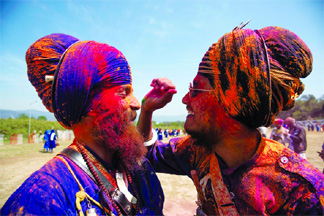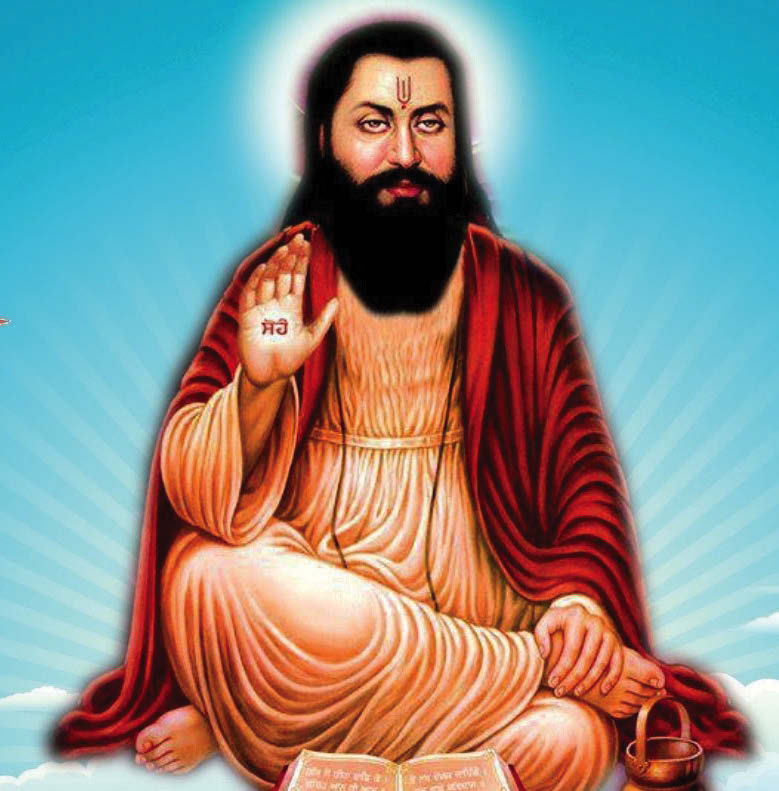
Hola Mohalla is one of the most vibrant and significant festivals celebrated by Sikhs around the world. This festival is observed annually, typically a day after Holi, and holds deep cultural, historical, and religious significance. It is marked by grand processions, displays of martial arts, poetry recitations, and devotional music. Unlike Holi, which is a festival of colors and joy, Hola Mohalla emphasizes valor, discipline, and community service, reflecting the martial and spiritual ethos of Sikhism.
Historical Background
Hola Mohalla traces its origins back to the late 17th century, during the time of Guru Gobind Singh, the tenth Sikh Guru. It was first celebrated in 1701 in the town of Anandpur Sahib in present-day Punjab, India. Guru Gobind Singh initiated this festival as a response to the prevalent socio-political conditions in the region. At that time, Sikhs were facing oppression from Mughal rulers, and the Guru sought to prepare his followers both spiritually and militarily.
The term Hola is derived from Holi, the Hindu festival of colors, whereas Mohalla means an organized procession. Unlike Holi, where people throw colors at each other, Hola Mohalla was conceptualized as a military exercise, where Sikhs could showcase their warrior skills and engage in mock battles to strengthen their combat readiness.
Significance of Hola Mohalla
The festival holds a profound significance in Sikh culture and tradition. It embodies key values of Sikhism, including:
– Martial Spirit: The festival serves as a reminder of the importance of self-defense and the warrior heritage of the Khalsa Panth (the collective body of baptized Sikhs).
– Spiritual Growth: Devotional activities such as kirtan (spiritual hymns), katha (religious discourse), and prayer sessions help Sikhs reaffirm their faith.
– Community Service: The festival promotes seva (selfless service), where Sikhs prepare and distribute langar (free community meals) to thousands of devotees and visitors.
– Unity and Brotherhood: The event brings together Sikhs from all walks of life, fostering a sense of unity and collective identity.
– Historical Remembrance: Hola Mohalla serves as a living memory of the Sikh struggle against tyranny and their commitment to justice and righteousness.
Celebrations at Anandpur Sahib
The epicenter of Hola Mohalla celebrations is Anandpur Sahib, the historic town where Guru Gobind Singh established the Khalsa in 1699. The festivities last for three days and include a variety of activities:
Nagar Kirtan (Religious Processions)
The celebrations commence with a grand Nagar Kirtan, a religious procession led by the Panj Pyare (the five beloved ones) carrying the Guru Granth Sahib, the holy scripture of Sikhism. Devotees sing hymns and chant prayers as they march through the streets.
Gatka Performances
One of the most thrilling aspects of Hola Mohalla is the demonstration of Gatka, a traditional Sikh martial art. Practitioners showcase their expertise with swords, spears, and other weapons, reenacting battle techniques that have been passed down through generations.
Mock Battles and Horse Riding Stunts
Sikh warriors, known as Nihangs or Akalis, participate in mock battles, military drills, and horse riding stunts. The Nihangs, recognized by their distinctive blue attire and tall turbans, are known for their valor and are often the main participants in these displays. They perform breathtaking stunts such as tent pegging, sword fighting on horseback, and spear-throwing contests.
Spiritual and Cultural Programs
Several spiritual discourses and kirtan sessions are held, where scholars and religious leaders discuss Sikh teachings and history. Poets and storytellers also recite vaars (ballads) that narrate heroic tales from Sikh history. These performances keep the legacy of Sikh warriors and martyrs alive.
Langar Seva (Community Kitchen)
A key highlight of the festival is the langar, where thousands of volunteers prepare and serve free meals to all attendees, regardless of caste, creed, or religion. This reflects the Sikh principle of equality and selfless service. The scale of the langar is massive, with thousands of kilograms of food being prepared daily during the festival.
Mass Gatherings and Devotional Assemblies
Throughout the festival, large congregations gather at the various gurdwaras (Sikh temples) in Anandpur Sahib. Devotees listen to religious discourses, participate in meditation sessions, and engage in collective prayers, reinforcing their spiritual connection.
Hola Mohalla Beyond Anandpur Sahib
While Anandpur Sahib remains the main hub of celebrations, Hola Mohalla is also observed in other parts of Punjab and by Sikh communities worldwide. Cities like Amritsar, Ludhiana, and Patiala hold local festivities, including religious gatherings and martial arts displays. In Western countries with significant Sikh populations, such as Canada, the UK, and the US, Sikh communities organize processions and cultural events to keep the spirit of Hola Mohalla alive. These events often include Gatka demonstrations, musical performances, and charity drives to promote Sikh values and traditions.
The Role of Nihangs in Hola Mohalla
The Nihangs, a warrior sect within Sikhism, play a crucial role in Hola Mohalla celebrations. These traditional Sikh warriors uphold the martial legacy of Guru Gobind Singh and are known for their distinctive blue robes, steel bracelets, and weapons. During the festival, Nihangs demonstrate exceptional skills in combat, horse riding, and weaponry, captivating audiences with their prowess.
Nihangs are also known for their unique lifestyle, which includes strict adherence to Sikh principles, celibacy, and an unwavering commitment to martial discipline. Their presence at Hola Mohalla is a living embodiment of Sikh warrior traditions.
Evolution of Hola Mohalla Over Time
Over the centuries, Hola Mohalla has evolved while retaining its core essence. What began as a military exercise has transformed into a grand festival that combines religious devotion, martial arts, and community service. Today, it serves as a living testament to Sikh resilience, discipline, and unity.
Modern celebrations have incorporated technology and media, allowing people worldwide to participate virtually through live broadcasts and online interactions. Despite these changes, the festival remains deeply rooted in its historical and religious traditions.





Be the first to comment